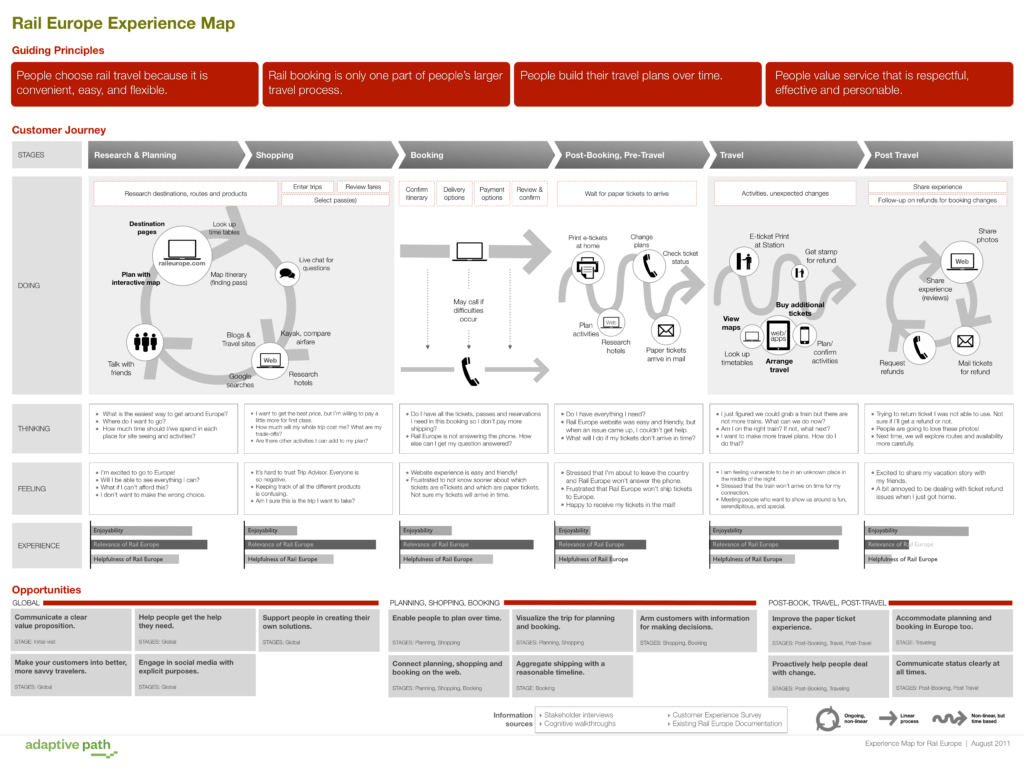Customer Journey Mapping and Experience Mapping probably sound awfully similar to the uninitiated. If you’ve found yourself in this position, you may ask what every person who’s begun their journey into UX has asked: “What’s the difference between a journey map and an experience map anyway?”
The Short Answer
Customer Journey Maps are Specific to a Persona
A journey map is also known as a customer journey map. These map the timeline of a specific type of customer (or persona) experiencing a product. The customer experience is segmented into stages across the horizontal axis, and lists customer ‘states’ down the vertical axis. Common states you’ll find are Thinking, Feeling, and Doing.
To effectively represent these specific types of customers/users, UX Designers often use Personas. Personas are stand-ins, based in research, for target segments of customer populations.
Experience Maps are Generalized
An Experience Map is similar, but more generalized. It still maps the experience of a product in stages across one axis and states across the other. But it does not represent a specific customer type or persona. It’s a generalized diagram of the experience that most average customers will have. As with Customer Journey Mapping, it’s also common to find Thinking, Feeling, and Doing states.

However, in both mapping artifacts, you’ll often see two more categories at the bottom of the ‘states’ axis. “Pain Points” summarizes the least-desirable user experiences during each particular stage and “Opportunities” contains actionable improvements that can be made by the product.
Here’s Why Mapping Experiences is Important
This is the big sell: at any stage of the development process, Product Owners and Managers can use a map artifact like these to not only get cross-channel teams on the same page, they can use the Opportunities category to build out their backlog and roadmap.
I’m talking user-centered strategy, organization, communication and planning all rolled into one handy visual tool.
As part of a successful design thinking methodology, these mapping techniques should be at the top of your tool box.
The difference between a customer journey map and an experience map is context.
Experience Mapping is generalized, while Journey Mapping is specific to a customer, user or persona.
And these techniques are not mutually exclusive. As part of a successful design thinking methodology, both of these mapping methods should be will be indispensable tools in your belt.
Both should be used at-will. The difference between customer journey map and experience map methods may seem like semantics, but each has its specific uses. So it’s only a matter of when, and which, each method will best serve your needs at a given time.
References and Further Reading
- Gibbons, Sarah. “UX Mapping Methods Compared: A Cheat Sheet.” Nielsen Norman Group. 2017.
- “Customer Journey Mapping.” Team Playbook. Atlassian. Accessed 2 Feb 2021.
- “Customer Journey Maps.” Interaction Design Foundation. Accessed 2 Feb 2021.